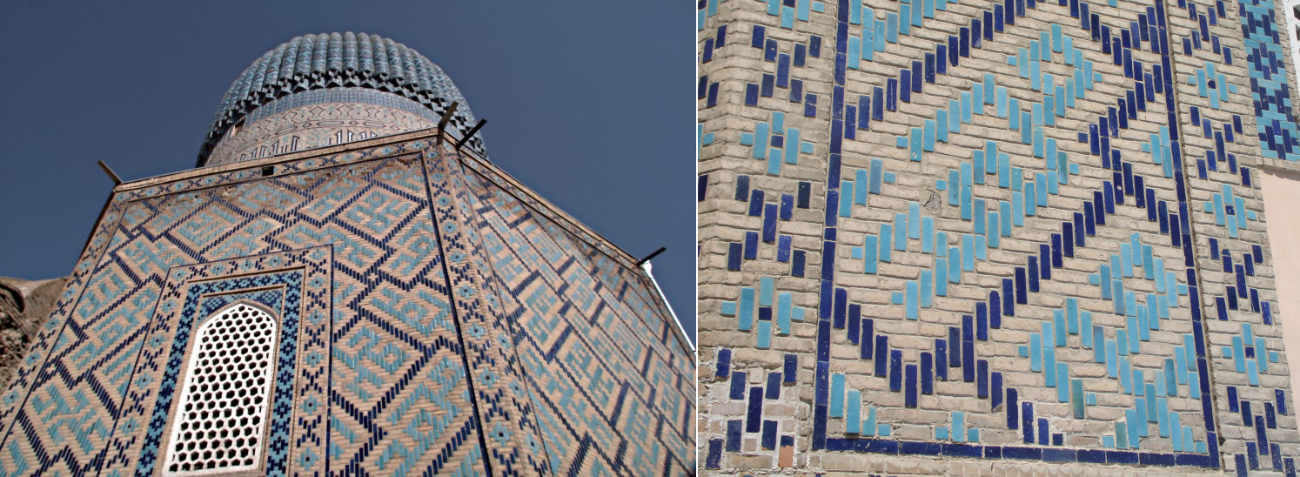Arranging coloured and glazed bricks
In the second decade of the 15th century after Amir Timur’s death, during the reigns of his successors, the
glazed decoration was only used to embellish and accentuate the architectural forms of a building, not longer as an all-covering canvas.
Extensive wall surfaces were decorated with large geometric designs against a background of brick facings consisting of small glazed bricks, which could be easily read from a considerable distance.
Examplary are the madrassas on the Samarkand Registan, the Bibi Khanum mosque and the Gur Emir mausoleum both in Samarkand too.
In the pictures below you can clearly see how coloured glazed bricks are arranged horizontally or vertically to create horizontal, vertical and even oblique lines in kufic calligraphy.
